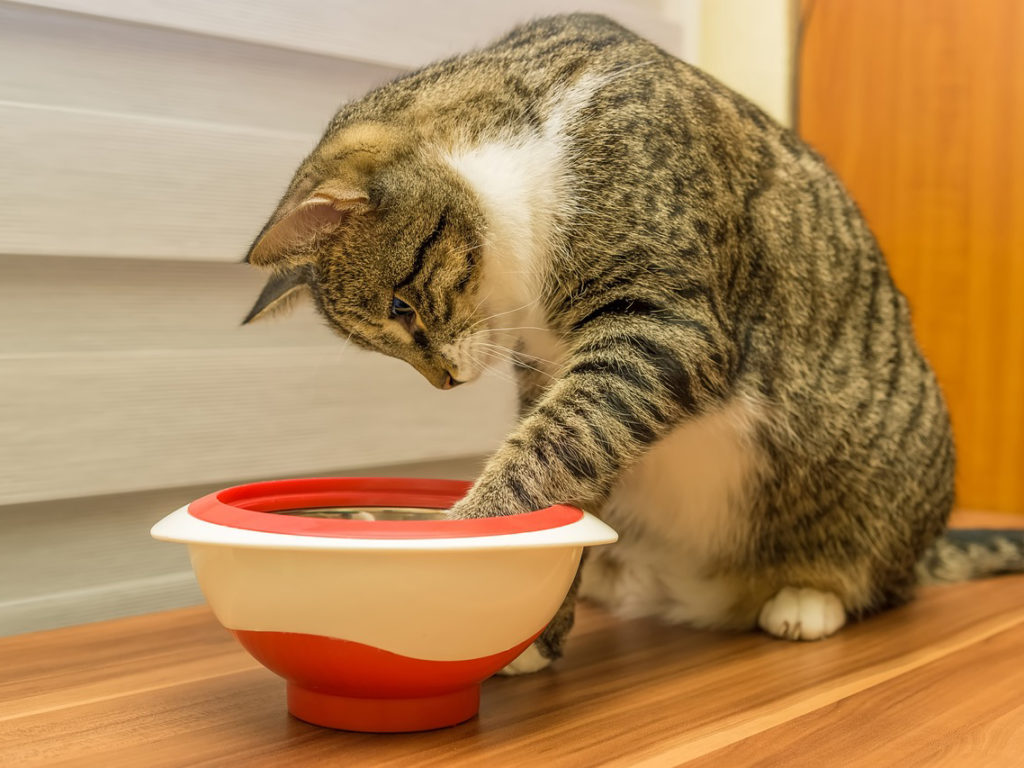When To Be Concerned About Feline Vomiting
While there are many joys that come with owning a cat, one drawback some owners may be familiar with is the occasional discovery of cat vomit. This aspect of cat ownership may spark concern in pet parents, but vomiting in cats can result from a variety of conditions, from benign to harmful.

Dr. Lori Teller, an associate professor in the Texas A&M College of Veterinary Medicine & Biomedical Sciences, says that one common reason a cat may vomit is hairballs. When cats groom themselves, they may swallow loose fur that clumps in their gastrointestinal tract. These clumps eventually become irritating, causing the cat to vomit up the hairball to prevent an obstruction.
“Cats may also vomit because they’ve gotten into something, such as plant material, loose thread or string-type material, rubber bands or paperclips, bones, a piece of toy, or something toxic,” Teller said. “Foreign bodies can cause partial or complete obstruction of the GI tract and lead to vomiting.”
A range of illnesses can also cause vomiting. An inexhaustive list includes kidney disease, liver disease, gastrointestinal parasites, food sensitivities, inflammatory bowel disease, cancer, hyperthyroidism, and other metabolic conditions.
Teller says that it is also important to distinguish vomiting from regurgitation, which is when a cat brings up undigested food as a result of eating too quickly. This is typically not a cause for concern and can be corrected by using food puzzle toys or special slow feeder bowls to decrease the speed of the cat’s eating.
“Almost all cats will vomit on occasion, so it’s pretty common,” Teller said. “If a cat vomits every now and then and is otherwise healthy—with a normal appetite, water consumption, activity level, and bowel movements—then generally we are not too worried about it.
“If a cat vomits frequently or is showing other signs of illness, such as lethargy, inappetence (a lack of appetite), drooling, hiding, diarrhea, or constipation, then the cat needs to be seen by a veterinarian,” Teller said. “Vomit that is thick and yellow or that contains foreign material may indicate a more serious problem, especially if it’s accompanied by other signs of illness.”
It can also be a problem if the cat has non-productive retching or is trying to vomit but nothing comes up. This could be a sign of an obstruction. Cats that have a sudden change in the frequency of their vomiting episodes should also be seen by a veterinarian.
Although Teller says there is no hard and fast rule about an acceptable frequency of vomiting incidents in general, if a cat vomits more than a couple of times per month or if the cat displays other symptoms of illness, it needs to be seen by a veterinarian.
Many medical problems can be controlled or treated with early intervention, so it is important that concerned pet owners err on the side of caution and consult their veterinarian if they think their pet may have a medical issue.
Teller said, “a veterinarian would much rather see a vomiting cat and determine that the cat is otherwise healthy than have an owner delay a visit because they think that it’s normal for a cat to vomit, and it turns out the problem is very serious.”
Pet Talk is a service of the School of Veterinary Medicine & Biomedical Sciences, Texas A&M University. Stories can be viewed on the web at vetmed.tamu.edu/news/pet-talk. Suggestions for future topics may be directed to vmbs-editor@tamu.edu.


